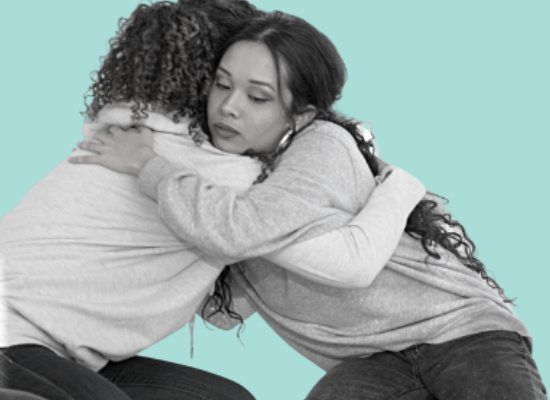
Stephanie Hepburn is a writer in New Orleans. She is the editor in chief of #CrisisTalk. You can reach her at .
When Steve Miccio’s family took him to a hospital in Dutchess County, New York, he was experiencing his first manic episode. “I went in ‘Steve,’” he says, “and came out of inpatient hospitalization broken.” He points out there was no mention of hope or recovery. “It was more about what was wrong with me and what medications would make me feel calmer.”
The emergency department and inpatient hospitalization experience often comes with high costs, financially and personally. It removed Miccio from day-to-day life for nearly two weeks. Then, a month after his return to work, his employer—an intellectual and developmental disabilities employment company—informed him he had two choices: quit or get demoted. “I couldn’t prove it was because of discrimination,” he says, “but I’d just gotten a stellar review and raise right before hospitalization, so it made little sense.”
It wasn’t until Miccio began attending a bipolar peer support group that he felt any vestige of hope. “There were a bunch of folks sitting there talking about their experience of living with bipolar disorder,” he says. “I could hear my words coming out of everyone else’s mouth, and I felt I could do better because I wasn’t alone.”
While he continued to work in IDD, he moonlighted in the evenings as a mental health screener at a nearby hospital in Orange County. “I thought it would be good for me,” he says, “so I could treat people the way they should be treated.” Instead, he quickly found the hospital had the same issues as the one where he’d been hospitalized. “It was eye-opening for me—what I experienced as a patient was happening here, too.”
Helping people navigate the emergency hospital system resulted in an ah-ha moment for Miccio. “When I started working in the emergency room,” he says, “I knew I’d found my specialty: treating people in crisis with dignity and respect.” He was the first person they’d interact with after receiving a medical screening. Miccio’s approach was person-centered and trauma-informed. “I didn’t think people should have to wait, and I didn’t think people should have to just sit there and not know what’s going on.” Instead, he’d explain to the person why there were delays. “I’d tell them, ‘The insurance company’s giving us a hard time,’ or ‘We’re trying to get you upstairs, but what do you need in the meantime?’” He also created a caring atmosphere by providing food and water. “I just wanted them to feel calmer and safer while sitting in this horrible emergency room.”
Decades later, Miccio’s aim to treat people with dignity and respect has only grown. Today he’s the CEO of People USA (formerly People, Inc.), a peer-led mental health crisis care provider. The company runs home-like, short-term crisis respites, a crisis stabilization center, mobile crisis services, integrated peer services, 24/7 warm lines, and medically supervised inpatient detox throughout eight New York counties. When he started with People USA, Miccio had a single goal—to improve the crisis care experience for people at the hospital where he’d been a patient. “I didn’t want to do anything grandiose,” he says. “I didn’t want to do anything more than just work with my local community and my hospital and make it a better place for people to go, so there was hope.” However, the hospital refused to engage. “They wanted nothing to do with me.”
Across the Hudson River, Miccio began working with Ulster County’s mental health department and attending local provider meetings. “I was learning as I went,” he says. At the meetings, he told hospital administrators that peers in the emergency department would improve safety and patient engagement. “In 1999 and 2000, providers didn’t embrace peer services,” he points out. “They couldn’t understand why they should have people with lived experience work in their hospitals.”
People, Inc. staff in Kingston began getting complaints about the poor quality of care from colleagues and others in the community. He and his colleagues began protesting outside Benedictine Hospital, where people had complained about their experience in the mental health unit. “We wanted to say that the quality of care is poor,” says Miccio, “and people deserve better rights and better care.” But unfortunately, the hospital didn’t respond, and the press didn’t pick it up. “No one cared,” he says. So he changed tactics and picketed the hospital board meetings, where he discovered the board had fired senior hospital staff. Miccio isn’t sure whether it was because of his picketing efforts or other reasons, but suddenly, he had a captive audience. Soon after, the county commissioner approached him at a provider meeting and said, “The hospital would like to know if you’d still like to put peers into the emergency room.”
He said, “Yes,” making People USA one of the first organizations in the United States to embed peers to greet people in the emergency department. “We greeted them even before they went through triage,” says Miccio. The funding for peer support came from the hospital and county. While mental health stigma continues to be pervasive outside and within the hospital setting, he points out that peer integration effectively shifts hospital culture. “It took a while, but emergency department staff finally embraced it because they saw people engaging in their own care.”
Miccio highlights that navigating the mental health system was the worst experience he’s ever had. “It wasn’t helpful or hopeful and did more damage than good,” he says. However, he notes that “crisis provides opportunity.” “It gave me a chance to do something about it.” Inspired by a New York respite program from the ‘70s, Miccio wrote a proposal and grant for a five-day, four-person respite house, now called Rose House, which the state office of mental health approved and funded. “I called it a crisis diversion house—people didn’t need to go to the emergency department, and they didn’t need medical care. What they needed was someone to listen, work with them, understand what crisis brought them there, and help teach them to deal with those challenges perhaps differently.”
The emergency department experience, notes Miccio, often creates a superseding crisis. By diverting, the challenges a person experiences can be more effectively addressed without the compounding trauma. “During the person’s stay, you can also start working on more of a healing, recovery process than just focusing on the crisis,” he says.
However, people in the community didn’t understand or appreciate the respite house. “They asked me, ‘You’re going to take people in crisis and put ‘em in your house?’” Community members frequently peppered Miccio with concerns about what if guests killed themselves, did drugs, or got violent. He responded, “Well, what if they love staying here? What if they do really well? What if they don’t have to go to the hospital emergency room anymore? And what if they start a path of recovery and don’t have to marry themselves to a mental health system?”
Today, he runs four peer-run, short-term crisis respite houses where people are welcome to stay for seven days. Communities have studied and replicated the Rose House model, resulting in 39 respite houses worldwide. The environment at each Rose House is much like a bed-and-breakfast, says Miccio, which can confuse people who’ve previously navigated the behavioral health system. However, confusion quickly transitions to increased comfortability. In fact, when people left the first Rose House, they often called to share how they were doing, which led Miccio to develop a warm line. “People would call us and say, ‘Hey, I’m feeling a little weird. I don’t need to come in, but I don’t feel good, so we created our first warm line, which naturally grew from the house.’”
Like many thought leaders, to prepare for 988, Miccio emphasizes the need for cross-sectoral partnerships and improved connectedness, including those within behavioral health. Telecom carriers must direct the three-digit nationwide number for mental health, substance use, and suicidal crises to the National Suicide Prevention Lifeline by July 16. “We say we need to work better with one another—that we’re working in silos,” he says, “but then sit in a provider meeting and say, ‘Don’t we work well together.’” “No, we don’t.” Insufficient communication has resulted in care chasms. For example, at a provider meeting, hospital staff realized they were faxing discharge plans to a fax machine that didn’t even exist. “They finally realized why people weren’t following up.”
“We need to work together as peer-run organizations, hospitals, clinics, emergency responders, and other service providers,” he says, “to help people live a self-determined, more independent, and more empowered life.”









